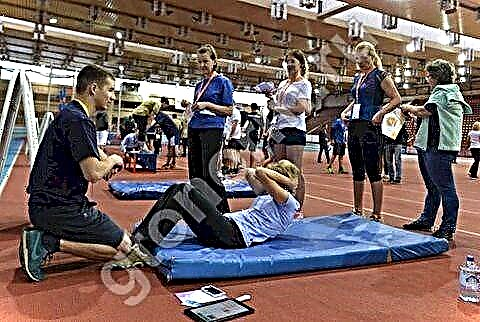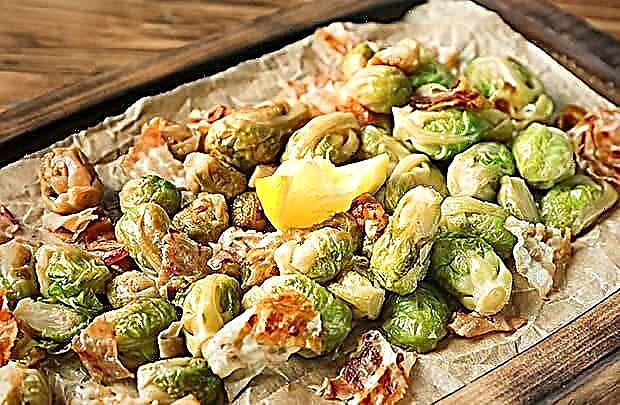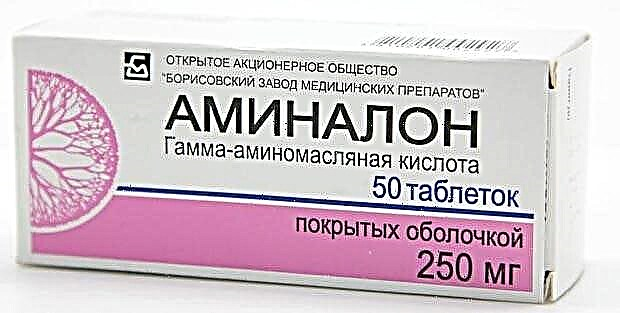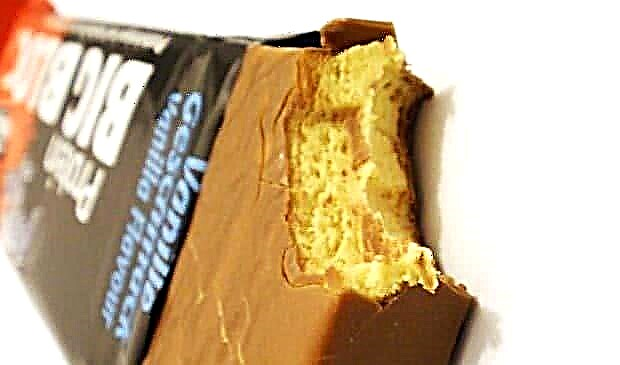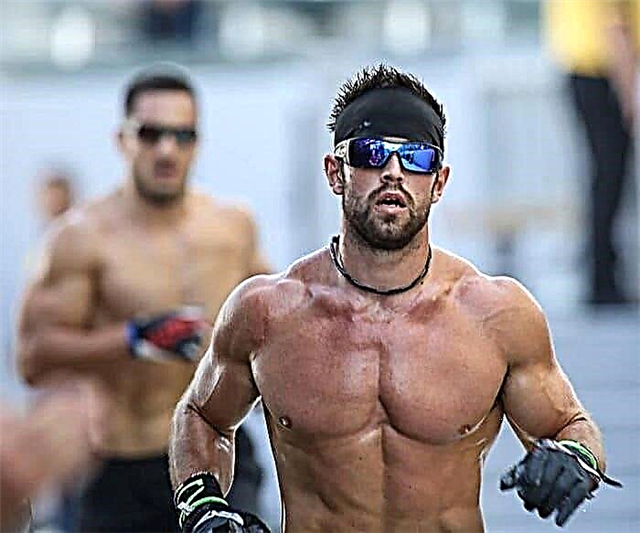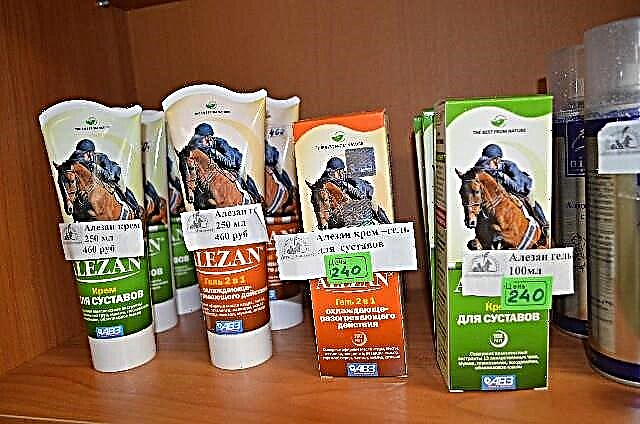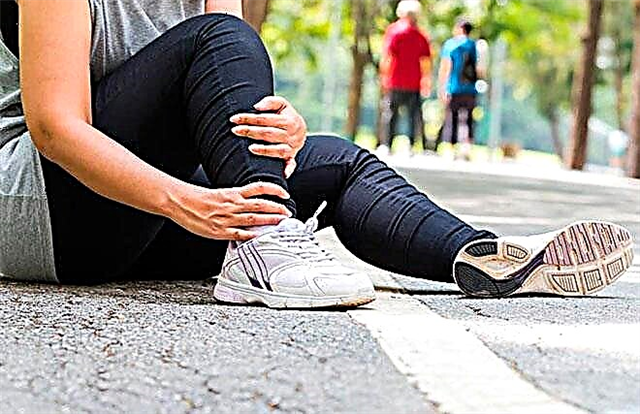Any technique or training program will not bring the desired result if you neglect the issue of nutrition. In CrossFit, as in any other high-intensity strength sport, the training athlete experiences tremendous stress. Therefore, CrossFit nutrition should be carefully balanced to help the athlete recover lost energy as quickly as possible.
Popular diets for crossfit athletes
Nutrition for the CrossFiter, like any other athlete, is one of the key factors affecting both the effectiveness of training and the health and well-being of the athlete in general.
Paleo diet
Typically, CrossFit nutrition is based on a paleo diet. The founder of CrossFit, Greg Glassman encouraged all CrossFitters to consume food to replenish the energy expended in training, but not so that it is stored as excess fat. In his opinion, it is the paleo diet that is able to provide the CrossFiter with energy for intense workouts and all the useful substances, but at the same time not letting excess calories be stored "in reserve".
Eating on the principle of a paleo diet - only lean meat, vegetables and fruits, seeds and nuts, is perhaps the most appropriate for a person living in the Paleolithic era, but for modern CrossFitters such a strict approach to the diet is sometimes not the most preferable. Professional CrossFitters rarely adhere to the paleo diet, due to its strict restrictions on the use of carbohydrates.

Zone diet
The Zone Diet is much more popular among CrossFitters. This principle of crossfit nutrition is based on dividing a portion of food by percentage: 40% carbohydrates, 30% protein and 30% fat. In this case, it is recommended to eat every 4-5 hours.
The average daily diet for a zoned athlete is 1500-2000 calories. This allows us to consider this type of food low in calories. This diet, like the paleo diet, involves a complete rejection of sugar. Nevertheless, healthy complex carbohydrates (oatmeal, barley, buckwheat) are not only allowed, but also occupy an important place in the diet. Thanks to the ability to consume complex carbohydrates, the zone diet can be considered more effective and preferable for recovery with high energy costs for CrossFit training.

Crossfit nutrition before and after training
The nutritional system in CrossFit is very attentive, providing for strict control of the quality, composition and quantity of products consumed both before and after training. We have made for you a short overview of what you can eat before and after training for weight loss and mass gain.
Pre-workout nutritional features
For the CrossFit athlete, pre-workout nutrition is perhaps the most important part of the daily diet. This meal provides an optimal supply of energy for productive exercise. Considering that CrossFit is a very energy-consuming and intense strength sport, nutrition before such a workout should be as balanced as possible in terms of energy value and quality of products.
As a general rule, you should eat food before exercise no later than 1.5-2 hours before exercise. In some cases, when the athlete's metabolism is slowed down, eat before training 3-4 hours before it starts.
Foods recommended for pre-workout should be slow-digesting and do not raise blood sugar levels. These products include cereals rich in useful complex carbohydrates, such as buckwheat, oatmeal, barley and other cereals with a low glycemic index.
Note that consuming protein and fat in combination with high glycemic carbohydrates will lower the glycemic index in carbohydrates.
Thus, eating white bread combined with butter or cheese does not cause such a sharp jump in blood sugar as eating the same white bread, but without butter or cheese. This aspect should be taken into account when drawing up a pre-workout menu.
Typically, a pre-workout meal should include a large portion of protein along with complex carbohydrates. The amount of protein can vary depending on what goal the athlete pursues in their training. For example, if the goal of training is to lose weight, then the pre-workout meal should include an increased amount of protein (about 20-30 grams). On the contrary, it is recommended to reduce the amount of complex carbohydrates (15-20 grams). Fats before exercise for weight loss should be eliminated altogether.
If the goal of training is to gain muscle mass, then the pre-workout menu can include not only an increased amount of protein (about 20-30 grams), but also a large portion of complex carbohydrates (50-60 grams), supplemented with a small amount of fat (no more than 3 -5 grams).

What to eat before exercise?
Here are some of the recommended pre-workout meal options:
- Whole grain bread with a piece of chicken or fish;
- Brown rice with a piece of lean fish or beef steak;
- Buckwheat with poached egg or a piece of chicken;
- Oatmeal with natural yogurt and 2-3 eggs omelet;
- Barley with turkey (or chicken) and onions;
- Jacket potatoes with cheese and eggs.
Whichever option you choose, it should be borne in mind that eating food before exercise should not interfere with full-fledged exercise in the gym. Therefore, the best pre-workout nutritional approach is to eat a full meal 2-3 hours before exercise. CrossFit meals also allow small snacks. It can be done just before the start of physical activity - 20-30 minutes.
Pre-workout snacks
You can have a snack immediately before training with any of the following dishes:
- Natural yogurt with the addition of fresh berries and a teaspoon of oatmeal;
- A cocktail made from milk and fresh berries or fruits;
- Fresh fruit (banana, apple, pear);
- Low fat muesli bar;
- Cottage cheese cocktail with banana and oatmeal in milk or natural yogurt.
The main rule of a pre-workout snack: the portion of food should be so small that the stomach is almost empty in 20-30 minutes by the beginning of the workout. And there was no heaviness in the abdomen, which can interfere with intense CrossFit exercises.
Post-workout nutrition
Post-workout nutrition is one of the most important meals for a CrossFit athlete. Moreover, after active physical exertion, food is absorbed by the body much faster and more efficiently. Even simple carbohydrates will be beneficial at this time - to restore energy reserves in the body. Professional athletes call this period the protein-carbohydrate or anabolic window. At this time, almost all food is used to restore energy and is included in the processes of anabolism.
As a general rule of thumb, post-workout carbs are best consumed from high glycemic sources, which are carbs that are absorbed very quickly and increase insulin levels in the blood. After training, insulin is necessary for the athlete's body to start the processes of anabolism (growth) and prevent muscle catabolism (destruction).
Note! If, after intense physical exertion, characteristic of CrossFit, the body does not receive a portion of fast carbohydrates, the catabolism process may start, when the body begins to consume its own muscles to replenish energy.
It is extremely undesirable to allow this process to occur, therefore, immediately after an intense workout (after 5-10 minutes), it is recommended to have a small snack.
Post-workout snacks
These can be any of the following snack options:
- Milkshake with fresh fruits and berries;
- Natural yogurt with banana and strawberries;
- Low-fat curd cheese;
- Any sports bar;
- A couple of peanut butter sandwiches.
It should be remembered that CrossFit nutrition does not favor eating fast carbs. Especially, it is highly undesirable to do this in the evening, and also if the athlete wants to lose weight. Therefore, if the workout falls in the evening or at night, a small portion of cottage cheese (no more than 100-200 grams) with the addition of a couple of spoons of honey or half a banana is quite suitable to close the protein-carbohydrate window.
After a snack, 1.5-2 hours after training, you can eat a full meal. A large portion of protein (about 40 grams) and complex carbohydrates (40-50 grams) should be included in the post-workout menu.
What to eat after training?
Recommended post-workout meals:
- Portion of durum pasta with cheese and eggs;
- Beef steak with jacket potatoes;
- Stew of chicken, green beans and bell pepper with buckwheat;
- Wild rice with turkey;
- Oat pancakes with cottage cheese.
However, it has been argued that creating a protein-carbohydrate window immediately post-workout is nothing more than a clever marketing ploy to boost sales of sports nutrition and beverages. And this version is confirmed in scientific circles. The researchers concluded that the launching of anabolic processes in the body will not begin until the body has restored its energy potential of phosphates and ATP in cells through oxidative processes.
It happens as follows. After intense strength training, a large amount of lactic acid is produced in the muscles, which enters the bloodstream, accumulates in the liver, where it is converted into glycogen. Resynthesis (reverse reduction) of glycogen is not possible without the participation of oxidative processes that provide the body with energy. Therefore, in the first 24-48 hours after intense training, the body is busy restoring and maintaining homeostasis, as well as converting lactic acid into glycogen through oxidative processes and is not at all interested in anabolism. This means that he absolutely does not need high doses of protein and carbohydrates.
Crossfit sports nutrition
We cannot imagine CrossFit without high-quality and functional muscle mass and endurance. Therefore, in order to maintain strength and energy, in addition to a daily full-fledged diet, CrossFit nutrition fully allows the use of special sports nutrition.
The basic set of any novice crossfitter is: protein (or gainer - depending on the training goals), BCAA amino acids, vitamin and mineral complexes. Many athletes supplement this list at their own discretion with creatine, chondroprotectors, L-carnitine, various testosterone boosters and other supplements.
Proteins and gainers
Protein is a concentrated protein mixture that, when it enters the body with the help of special enzymes, is split into amino acids and is used for the building needs of the body. The protein in CrossFit, as a basic supplement, can be an excellent helper in case there is no time or opportunity for a full meal.
A gainer is a protein-carbohydrate mixture to which creatine, amino acids or other trace elements are often added. Usually, such mixtures are used by people of lean physique who do not have problems with excessive fat deposition (ectomorphs), to quickly replenish the body's energy potential after training and gain body weight. With regard to CrossFit, as a high-energy and extremely intense strength sport, the use of a gainer can be recommended before a training load to maintain a high intensity of training and good performance of the athlete. Gainers of modern production do an excellent job not only with the task of replenishing increased energy consumption after CrossFit, but also helping the muscles to recover better after training.

Amino acids
Amino acids are the basis of all living things, since it is from them that all proteins of the body consist. BCAA amino acids are the most widely used in sports nutrition. This amino acid complex is made up of three essential branched-chain amino acids: leucine, isoleucine, and valine. These amino acids make up 35% of all amino acids in muscle tissue, activate the processes of anabolism, prevent catabolism and contribute to a moderate fat burning effect. The main difference between BCAA amino acids and other amino acids is that they are not synthesized in the human body on their own, unlike other 17 amino acids, so a person can get them only from food or sports supplements.
However, the need for BCAA amino acids is currently being questioned, as many researchers have concluded that the intake of amino acids by athletes is sufficient when following an ordinary balanced diet, including the consumption of poultry, beef, pork, eggs, cheese and dairy products rich in protein. It is these food products that can fully cover the body's need for essential amino acids.
Vitamin and mineral complexes
Vitamin-mineral complexes are biologically active supplements containing vitamins and minerals necessary to maintain all body functions. For CrossFitters, like any other athlete, vitamins and minerals play an important role in recovery, muscle gain, and weight loss. The modern market for vitamin and mineral complexes offers a wide range of prices for these supplements: from 200 rubles to 3000-5000 rubles. Nevertheless, the efficiency of a particular complex does not always depend directly on the price. Often, athletes take vitamins by inertia, not knowing the actual needs of the body for a particular substance. Therefore, before taking this or that complex, it is advisable to undergo blood tests for vitamins. Hypervitaminosis (excess vitamin) is sometimes more dangerous than hypovitaminosis (vitamin deficiency).
The vitamin intake regimen is usually 1-2 months of daily intake with a break of 2-3 months. Taking vitamins throughout the year is not recommended for the reason that the body may completely lose its ability to absorb vitamins, minerals and other nutrients from food. Therefore, a break in taking even the most harmless vitamin and mineral complexes is necessary in any case.

Muscle Building Nutrition
There are many different opinions and views on the issue of nutrition for building muscle mass at the moment, sometimes conflicting with each other. Nevertheless, such a multivariate approach to the problem of gaining muscle mass can only be explained by the desire to bring something new, original and unique to nutrition.
What to consider when mass gaining?
When building muscle mass, pre-workout nutrition along with post-workout nutrition plays the most important role. Therefore, not only the quality of food is of particular importance, but also a strict regimen of food intake. 2 hours before physical activity, a full meal should be taken, consisting of a portion of complex carbohydrates (at least 50-60 grams) and high-quality protein (at least 20-30 grams).After training, you should immediately have a small snack (in this case, any milkshake with fruit is suitable, and from sports nutrition - a portion of a gainer), and 1.5-2 hours after training, you should have a full meal rich in complex carbohydrates and proteins. it is also acceptable to eat a small amount of fast carbohydrates for dessert.
By and large, the set of muscle mass is built on the same principles, regardless of the degree of the athlete's fitness or other criteria.
Weight gain principles
- Consumption of high-calorie foods. In the case of gaining muscle mass, the athlete's daily diet should consist of 60-70% high-calorie foods. Of course, you cannot plead for the health benefits of eating vegetables and fruits, but with a diet aimed at gaining muscles, excess fiber will interfere with proper digestion and slow down the absorption of nutrients. Therefore, the proportion of fiber in the diet of an athlete in the case of gaining muscle mass should not exceed 20-30%.
- 6 meals a day. 5 or 6 meals a day is the optimal number of meals for gaining muscle mass. With such a diet, the digestive tract is not overloaded, and the amount of nutrients in the blood is always maintained at a certain level necessary for effective anabolism. Studies confirm the fact that if the amount of food, designed for 5-6 meals, is eaten in 2 or 3 meals, then the excess of nutrients will be stored in the form of fat and will not benefit the body. Moreover, it has been proven that the anabolic effect of food intake lasts no more than 3-4 hours.
- The proportions of proteins, carbohydrates and fats. The daily diet for an athlete, whose goal is to gain muscle mass, should consist of 50-60% carbohydrates, 30-40% of protein and 15-20% of healthy fats. In this case, you should mainly use complex carbohydrates. Most of the protein is recommended to be obtained from food and not from sports nutrition. It is highly not recommended to cut the amount of fat (below 10%) in order to avoid metabolic disorders in the body.
By following these nutritional principles, combining them with the right intense workouts, you can gain quality muscle mass.

Nutrition for CrossFit for weight loss
Many novice CrossFit athletes, especially girls, dream of losing weight. By themselves, crossfit exercises are quite energy-intensive and, if the recommendations in nutrition are followed, they contribute to the correct and high-quality loss of excess weight.
The main rule of losing weight is: consume fewer calories than you can spend them. Therefore, the correct diet for weight loss is the most important criterion for successful weight loss.
What to consider when losing weight?
There are a number of points to consider when losing weight.
- There is no local weight loss through nutrition - this must be remembered. The human body spends excess fat very competently, preventing disproportionate burning of body fat. Usually, first of all, a decrease in volume is noticeable in the upper part of the body (relevant for women), which may be mistaken by some women for local burning, but this is not the case. In fact, fat burning processes are triggered all over the body at once, it's just that the result is not always noticeable.
- Fast weight loss - this is the wrong weight loss. The result of rapid weight loss, at best, will be a loss of water in the body, at worst - significant loss of muscle mass and hormonal disorders. Usually, after losing weight quickly, excess weight returns in a short period of time with a supercompensating effect and edema.
- Anyone can lose weight. It is enough to provide a lack of intake of calories from food or increase their consumption through physical activity.
As in the case of a set of muscle mass, there are a number of principles in the matter of losing weight, if followed, you can achieve lasting results.

Weight loss principles in CrossFit
- Low-calorie food intake. The diet of an athlete who wants to lose weight should consist of 70-80% low-calorie foods. The most optimal and healthy foods are those rich in fiber, which lead to quick satiety, are low in calories and support the digestive tract. Also, fiber is able to reduce the absorption of carbohydrates and fats from food, ensuring their gradual entry into the bloodstream.
- 6 meals a day. As in the case of a set of muscle mass, when losing weight, you should eat often (at least 5-6 times a day) and in small portions. With this way of eating, the energy from food will be completely converted into energy to maintain vital activity, and its deficiency will be compensated for with the help of excess body fat. In addition, this diet allows you to minimize the feeling of hunger during the day and prevents diseases of the gastrointestinal tract.
- Eliminate simple carbohydrates and limit fat. Simple (fast) carbohydrates, when ingested, cause a sharp increase in blood sugar, which provokes the appearance of a feeling of hunger within 15-20 minutes. Moreover, simple carbohydrates are high in calories and are absorbed very quickly, triggering the production of insulin and triggering the process of fat storage. Fats are also high in calories and do not require a lot of energy to be absorbed by the body. For example, if you eat 100 calories of carbohydrates, then 23 calories will go into processing and save 77 calories from carbohydrates. But if you eat 100 calories of fat, then only 3 calories are required to store them, and 97 calories remain in the body. Moreover, if you eat more fat than the body needs at the moment, then the lipase enzyme is activated, which starts the process of fat deposition in adipocytes (fat cells). However, it is impossible to completely limit the intake of fats, as they are responsible for the health of the skin, hair and nails, as well as for maintaining hormonal levels in the body.
- Diet restrictions before and after exercise. It is recommended to eat a small portion of protein 2 hours before training. You should not eat immediately before starting a workout, as the body must expend energy from its own fat reserves, and not food. After training, it is recommended not to eat at all for 2 hours, since during this period the metabolic rate in the body increases sharply, and the concentration of fatty acids in the blood increases. If you eat right after training, then all fatty acids will return back to adipocytes (fat cells), and if you do not eat, they will "burn".
Weekly CrossFit Menus
| Monday | |
| First meal: | 50 grams of oatmeal or a serving of oatmeal, one small banana or a couple of slices of cheese, a glass of kefir or cocoa. |
| Second meal: | Three hard-boiled eggs or a three-egg omelet, a small fruit (green apple or orange). |
| Third meal: | Lean beef steak (150 grams) with green beans, fresh vegetable salad with herbs, green tea or coffee without sugar. |
| Snack: | 30-40 grams of dried fruits or nuts, one medium-sized orange. |
| Fourth meal: | 100 grams of white fish, vegetable salad with herbs and natural yogurt. |
| Snack before bed: | A glass (250 grams) of natural yogurt or kefir. |
| Tuesday | |
| First meal: | An omelet of three eggs or 50 grams of muesli with bran, one small fruit (banana, apple or pear), green tea or a glass of milk. |
| Second meal: | 100 grams of natural yogurt and a small portion of buckwheat porridge. |
| Third meal: | Chicken fillet (150 grams) with durum pasta and cheese, some fresh vegetables. |
| Snack: | 50 grams of dried fruit or large fruit (banana, pear or apple). |
| Fourth meal: | 150 grams of fish, baked with vegetables, a portion of wild rice, fresh vegetable salad. |
| Snack before bed: | A glass of yogurt or 100 grams of cottage cheese. |
| Wednesday | |
| First meal: | Wheat or oatmeal, cocoa, a couple of pieces of cheese. |
| Second meal: | Two hard-boiled eggs, one small banana. |
| Third meal: | 150 grams of lean fish with buckwheat and green peas, a serving of fresh vegetable salad, a glass of kefir or milk. |
| Snack: | 100 grams of cottage cheese or a glass of natural yogurt. |
| Fourth meal: | Turkey fillet (150 grams) with zucchini and eggplants, baked in the oven, vegetable salad with herbs. |
| Snack before bed: | A glass of yogurt or milk. |
| Thursday | |
| First meal: | Three-egg omelet with seafood or canned tuna, a slice of whole grain bread, cocoa or green tea. |
| Second meal: | Whole grain bread sandwich with cheese, a glass of milk. |
| Third meal: | Chicken fillet (150 grams) with mushrooms and onions, a portion of jacket potatoes, green tea. |
| Snack: | One banana or a handful of nuts (50 grams). |
| Fourth meal: | White fish (150 grams) with buckwheat, a portion of vegetable salad with herbs. |
| Snack before bed: | A glass of kefir or milk. |
| Friday | |
| First meal: | Buckwheat or oatmeal, a couple of pieces of cheese, cocoa. |
| Second meal: | Three-egg omelet or three hard-boiled eggs, small fruit (apple or pear). |
| Third meal: | Beef or pork steak (5.2911 oz) with durum pasta, salad with fresh vegetables and herbs, green tea. |
| Snack: | A glass of natural yogurt or 100 grams of cottage cheese. |
| Fourth meal: | Chicken fillet (100 grams) with green beans and bell pepper, a portion of vegetable salad. |
| Snack before bed: | A glass of yogurt or kefir. |
| Saturday | |
| First meal: | Three-egg omelet with cheese and a slice of whole grain bread, cocoa. |
| Second meal: | A portion of millet porridge with pumpkin, green tea. |
| Third meal: | 150 grams of lean white fish with baked potatoes or wild rice, a serving of fresh vegetable salad, green tea. |
| Snack: | A glass of natural yogurt or 100 grams of cottage cheese. |
| Fourth meal: | 150 grams of turkey fillet with green beans and buckwheat, a serving of fresh vegetable salad with herbs. |
| Snack before bed: | A glass of kefir or milk. |
| Sunday | |
| First meal: | Barley or wheat porridge, a couple of pieces of cheese, cocoa. |
| Second meal: | Three hard-boiled eggs, one small fruit (apple, pear or orange). |
| Third meal: | 150 grams of turkey fillet with buckwheat or durum pasta, a portion of fresh vegetable salad with herbs and natural yogurt. |
| Snack: | 50 grams of dried fruit or one small banana. |
| Fourth meal: | 150 grams of red fish with jacket potatoes, a serving of fresh vegetable salad with herbs. |
| Snack before bed: | A glass of milk or natural yogurt. |

